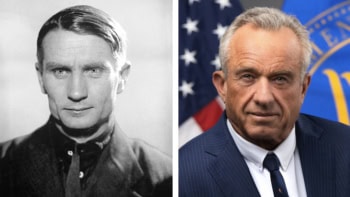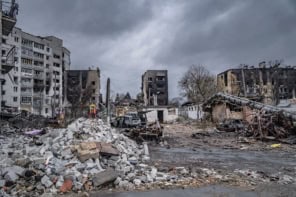Susan Ballard reviews The Weather Experiment: the Pioneers who Sought to See the Future by Peter Moore

Late in the autumn of 1703, a colossal storm swept across southern England, causing more than 8000 deaths and severely damaging buildings, forests and ships. The “Great Storm” came with no warning; indeed, there would be no storm warnings or weather forecasts for another century and a half. Progress was slow, in part, because weather observation – unlike astronomy – was a local phenomenon. While anyone, anywhere on Earth could see the entire vast expanse of the heavens, they could only see the weather to their own horizon. Hence, the only records were spot measurements contained in ship’s logs, diaries and personal experience.
The Weather Experiment tells the story of how this situation began to change. Author Peter Moore takes us on a compelling journey through the early history of weather forecasting, bringing to life the personalities, lives and achievements of the men who put in place the building blocks required for forecasts to be possible. Nowadays, when satellite images of the Earth appear on every TV weather forecast and meteorologists have established conventions for recording and classifying weather, it is hard to comprehend just how visionary these pioneers had to be. For them, the idea that one could learn something useful from mapping what the weather was doing at a single moment, on a continental or global scale, was little short of revolutionary.
In order to progress beyond isolated observations and records, people with an interest in weather needed a way to exchange information quickly. Descriptions of the weather also needed to be standardized so that comparisons could be made. (Even now, speedy communication of weather observations is essential and the ever-increasing volumes of data from satellites and remote sensing instruments pose challenges to modern technology.) Moore’s book is therefore not just about the weather, but also about the development of early communication methods such as the telegraph and Morse code, which made it possible to exchange observations and to collect data for mapping or tabulation.
In 1853 a group of maritime nations agreed (following an American suggestion) that sailors on their ships would log their position, air pressure, temperature, wind force and direction at set times each day. The man selected to co-ordinate the UK’s weather-recording effort was Robert FitzRoy, and his appointment marked the beginning of what has become the Meteorological Office (Met Office). FitzRoy’s job was not to predict weather, though. Instead, he was charged with facilitating and gathering the various weather observations, with the aim of producing climatological wind charts to reduce the cost of shipping.
FitzRoy, however, believed strongly that advance warning of storms could save lives and property at sea. As captain of the HMS Beagle in 1829 (during the voyage before his famous circumnavigation with Charles Darwin), he had lost two seamen in a storm while surveying the South American coast. Shortly before the squall hit, he had noticed a dip in barometric pressure, and in its wake he began taking barometric readings every three hours. Unusually for a commander, FitzRoy had always kept daily records of pressure and temperature, and he carried this enthusiasm into his new role. Three years into his meteorological work, he had established a ship-based weather observing network, issued wind charts and designed a new type of barometer. He had also published a weather guide booklet called “Barometer and Weather Manual”, based on his mandate to instruct ship’s captains on methods of distinguishing between cyclones and ordinary gales.
In the summer of 1859 FitzRoy persuaded the British Association to pass a resolution calling on the government to fund a storm-warning system. Before any system could be put in place, however, the steam clipper Royal Charter sank off the island of Anglesey with the loss of more than 450 lives. Galvanized by the disaster, in June 1860 the Board of Trade approved FitzRoy’s plan for a storm-warning service. His plan included 13 coastal telegraph stations supplied with meteorological equipment that would transmit readings of temperature, pressure, wind direction and information about the state of the weather to London at nine o’clock each morning. A map would then be produced, and if a storm was noticed, a warning message would be sent back down the line. To transmit the message to ships, a series of cones was hoisted aloft at major ports. In 1861 this service was expanded to newspapers, which began printing interpretations or predictions of weather for the next two days.
In many ways, FitzRoy’s system was far ahead of its time and, then as now, the forecasts service was not without its detractors. Sadly (and frustratingly), there is apparently no record of the methods FitzRoy used to produce his controversial storm warnings. In any case, after his suicide in 1865, the service was stopped, and although the Board of Trade re-introduced a storm intelligence service several years later, that still left a gap to be filled in the future.
Moore’s book concentrates mainly on the 19th century, so it does not cover the development of the equations we now use to understand the weather and to make predictions based on numerical models. Instead, it focuses more on the history of observational meteorology, discussing James Glaisher’s dramatic balloon ascents of 1862–1866 and John Constable’s paintings of skies as well as FitzRoy’s efforts. It also covers certain personal aspects of the debate over various theories for the cause of storms, and whether air was rotating around storms (as suggested by William Redfield) or inwards and rising upwards (as suggested by James Espy). These competing theories were reconciled in 1856, after the deaths of both men, when a third meteorologist, William Ferrel, recognized the role played by the Earth’s rotation and the Coriolis force in moving air around the atmosphere.
After more than 30 years working for the Meteorological Office and with the international numerical weather prediction community, I found it interesting to see how the thoughts and actions of the 19th-century pioneers influenced the practice of modern weather forecasting and measurement. A good example is the practice of producing synoptic analyses and global forecasts at 0000UTC and 1200UTC. Nowadays, with weather satellites, ground-based remote sensing and automatic weather stations there is no need to be tied to these synoptic times, but the practice continues. As we celebrate 50 years of numerical weather prediction it is stimulating to read about the lives of the pioneers of meteorology and weather forecasting and to see how far we have progressed since then.
- 2015 Chatto & Windus/Farrar, Straus and Giroux £20.00/$30.00hb 416pp



